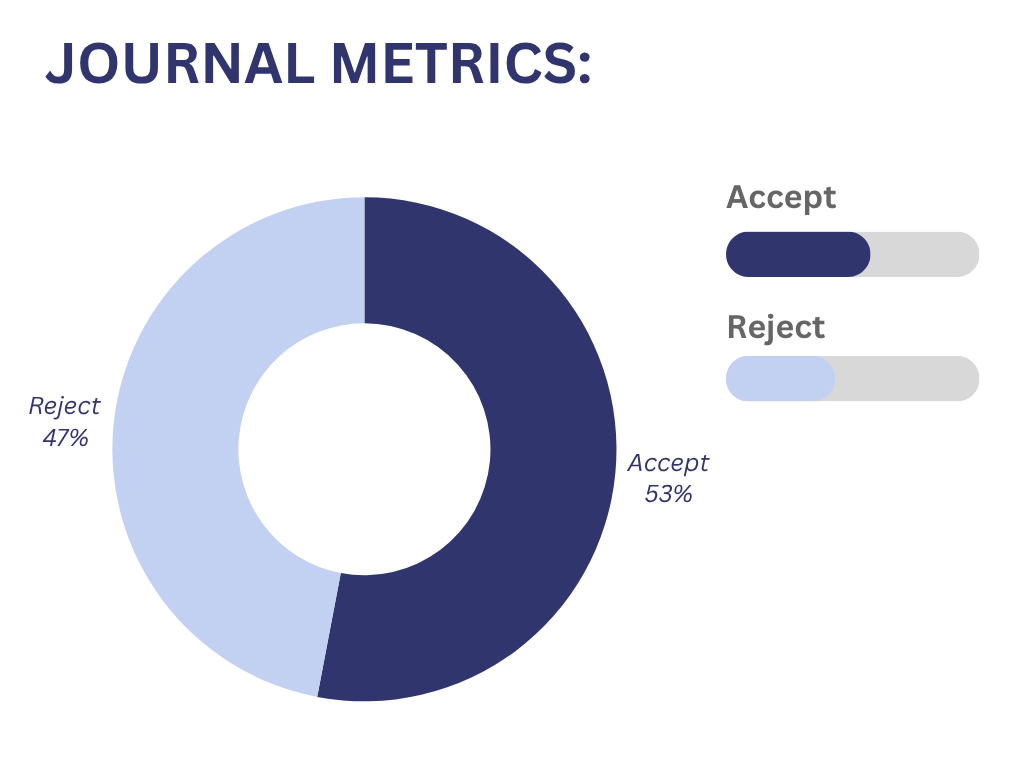Featural Analysis, Protective Capacity and Potential ofShallow Hydrogeological Layers of Densely PopulatedResidential Area, Akwa Ibom State, Southern Nigeria
Abstract
Geoelectrical resistivity technology (GRT), together with geological data, was employed to delineate the hydrokinetic characteristics, protective capacity, and groundwater potential of a sought-after housing development in Southern Nigeria. The GRT utilized Schlumberger's 1-D vertical electrical resistivity sounding (VES) and 2-D electrical resistivity tomography (ERT) techniques. The primary and secondary geoelectric indices were combined with existing geological data to calculate hydrodynamic parameter maps of the shallowest aquifer unit. These maps are crucial for effectively managing the unconfined aquifer system beneath, which is extensively utilized in the area. The study area's saturation dynamics were determined by analyzing total porosity (ranging from 0.282 to 0.691), specific yield (ranging from 0.040 to 0.107), field capacity/specific retention (ranging from 0.242 to 0.623), and storage-dependent drainability efficiency (ranging from 7.6% to 40.5%). The results indicated that the area experiences the most effective release of pore water when the drainability efficiency, which is reliant on storage, exceeds 21%. The range of potential index parameters, including transmissivity (57.4–4339.2 m2/day), transverse resistance/aquifer potential scale (453.6–152,756.5 Ωm2), permeability (91.7–7269.7 mD), and hydraulic conductivity (57.4–4339.2 m/day), exhibited favorable potential but limited to moderate protection, as indicated by the longitudinal conductance index (0.004–0.6218 Siemens). Given the strong preference of many people to live in this rapidly growing and competitive housing estate, it is important to establish effective waste disposal systems to prevent the leakage and infiltration of harmful substances, such as leachates and other organic/inorganic waste, into the vulnerable underground water sources that provide water for various purposes.
Keywords:
Hydrokinetic properties, Parametric characterization, GRT, VES, SDEReferences
- [1] Niwas, S., & Singhal, D. C. (1985). Aquifer transmissivity of porous media from resistivity data. Journal of hydrology, 82(1–2), 143–153. https://doi.org/10.1093/geront/30.1.43
- [2] Bhatt, K. (1993). Uncertainty in wellhead protection area delineation due to uncertainty in aquifer parameter values. Journal of hydrology, 149(1–4), 1–8. https://doi.org/10.1016/0022-1694(93)90095-Q
- [3] Niwas, S., Tezkan, B., & Israil, M. (2011). Aquifer hydraulic conductivity estimation from surface geoelectrical measurements for Krauthausen test site, Germany. Hydrogeology journal, 19(2), 307–315. DOI: 10.1007/s10040-010-0689-7
- [4] Tizro, A. T., Voudouris, K., & Basami, Y. (2012). Estimation of porosity and specific yield by application of geoelectrical method--a case study in western Iran. Journal of hydrology, 454, 160–172. https://doi.org/10.1016/j.jhydrol.2012.06.009
- [5] Frind, E. O., & Molson, J. W. (2018). Issues and options in the delineation of well capture zones under uncertainty. Groundwater, 56(3), 366–376. https://doi.org/10.1111/gwat.12644
- [6] Hilberts, A. G. J., Troch, P. A., & Paniconi, C. (2005). Storage-dependent drainable porosity for complex hillslopes. Water resources research, 41(6). https://doi.org/10.1029/2004WR003725
- [7] George, N. J., Obianwu, V. I., & Obot, I. B. (2011). Laboratory estimation of aquifer effective porosities from core samples obtained during borehole drilling in parts of the Niger Delta Region, South-eastern Nigeria. Advances in applied science research, 2(1), 153–162.
- [8] Fetter, C. W. (1988). Applied hydrogeology. Waveland Press.
- [9] Karanath, K, R. (1994). Hydrogeology. Mc Graw-Hill Publishing.
- [10] George, N. J., Emah, J. B., & Ekong, U. N. (2015). Geohydrodynamic properties of hydrogeological units in parts of Niger Delta, Southern Nigeria. Journal of african earth sciences, 105, 55–63. https://doi.org/10.1016/j.jafrearsci.2015.02.009
- [11] Mazáč, O., Kelly, W. E., & Landa, I. (1985). A hydrogeophysical model for relations between electrical and hydraulic properties of aquifers. Journal of hydrology, 79(1–2), 1–19. https://doi.org/10.1016/0022-1694(85)90178-7
- [12] Schwartz, F. W., & Zhang, H. (2024). Fundamentals of groundwater. John Wiley & Sons.
- [13] Dietrich, S., Carrera, J., Weinzettel, P., & Sierra, L. (2018). Estimation of specific yield and its variability by electrical resistivity tomography. Water resources research, 54(11), 8653–8673. https://doi.org/10.1016/0022-1694(85)90178-7
- [14] Luo, Z., Shen, C., Kong, J., Hua, G., Gao, X., Zhao, Z., … & Li, L. (2018). Effects of unsaturated flow on hillslope recession characteristics. Water resources research, 54(3), 2037–2056. https://doi.org/10.1002/2017WR022257
- [15] Nielsen, P., & Perrochet, P. (2000). Watertable dynamics under capillary fringes: experiments and modelling. Advances in water resources, 23(5), 503–515. https://doi.org/10.1016/S0309-1708(99)00038-X
- [16] Todd, D. K. (1980). Ground water hydrology. Wiley.
- [17] Hamill, L., & Bell, F. (1986). Groundwater resources development. But-terworths Publications.
- [18] Zohdy, A. A. R., Eaton, G. P., & Mabey, D. R. (1974). Application of surface geophysics to ground-water investigations. https://pubs.usgs.gov/publication/twri02D1
- [19] Zohdy, A. A. R. (1989). A new method for the automatic interpretation of Schlumberger and Wenner sounding curves. Geophysics, 54(2), 245–253. https://doi.org/10.1190/1.1442648
- [20] George, N. J. (2020). Appraisal of hydraulic flow units and factors of the dynamics and contamination of hydrogeological units in the littoral zones: a case study of Akwa Ibom State University and its Environs, Mkpat Enin LGA, Nigeria. Natural resources research, 29(6), 3771–3788. https://doi.org/10.1007/s11053-020-09673-9
- [21] George, N. J. (2021). Geo-electrically and hydrogeologically derived vulnerability assessments of aquifer resources in the hinterland of parts of Akwa Ibom State, Nigeria. Solid earth sciences, 6(2), 70–79. https://doi.org/10.1016/j.sesci.2021.04.002
- [22] Ibuot, J., Akpabio, G., & George, N. (2013). A survey of the repository of groundwater potential and distribution using geoelectrical resistivity method in Itu Local Government Area (LGA), Akwa Ibom State, southern Nigeria. Open geosciences, 5(4), 538–547. https://doi.org/10.2478/s13533-012-0152-5
- [23] Ibuot, J. C., George, N. J., Okwesili, A. N., & Obiora, D. N. (2019). Investigation of litho-textural characteristics of aquifer in Nkanu West Local Government Area of Enugu state, southeastern Nigeria. Journal of african earth sciences, 153, 197–207. https://doi.org/10.1016/j.jafrearsci.2019.03.004
- [24] Obianwu, V., George, N., & Udofia, K. (2011). Estimation of aquifer hydraulic conductivity and effective porosity distributions using laboratory measurements on core samples in the Niger Delta, Southern Nigeria. International review of physics, 5(1), 19–24.
- [25] Obiora, D. N., Ibuot, J. C., & George, N. J. (2016). Evaluation of aquifer potential, geoelectric and hydraulic parameters in Ezza North, southeastern Nigeria, using geoelectric sounding. International journal of environmental science and technology, 13, 435–444. https://doi.org/10.1007/s13762-015-0886-y
- [26] Ibanga, J. I., & George, N. J. (2016). Estimating geohydraulic parameters, protective strength, and corrosivity of hydrogeological units: a case study of ALSCON, Ikot Abasi, southern Nigeria. Arabian journal of geosciences, 9, 1–16. https://doi.org/10.1007/s12517-016-2390-1
- [27] Stempvoort, D. Van, Ewert, L., & Wassenaar, L. (1993). Aquifer vulnerability index: a GIS-compatible method for groundwater vulnerability mapping. Canadian water resources journal, 18(1), 25–37. https://doi.org/10.4296/cwrj1801025
- [28] Aweto, K. E. (2011). Aquifer vulnerability assessment at Oke-Ila area, southwestern Nigeria. International journal of the physical sciences, 6(33), 7574–7583.
- [29] Karadavut, S. (2009). Potential and quality of surface water and ground water resources in aksaray province and their assessment in terms of efficient irrigation [Thesis]. https://ouci.dntb.gov.ua/en/works/4zkddMEl/
- [30] Shamsudduha, M., Taylor, R. G., & Longuevergne, L. (2012). Monitoring groundwater storage changes in the highly seasonal humid tropics: Validation of GRACE measurements in the Bengal Basin. Water resources research, 48(2). https://doi.org/10.1029/2011WR010993
- [31] Petters, S. W. (1982). Central west African cretaceous-tertiary benthic foraminifera and stratigraphy. Palaeontographica abt. A, 179, 1–104. https://doi.org/10.2343/geochemj.40.227
- [32] Petters, S. W., Usoro, E. J., Udo, E. J., Obot, U. W., & Okpon, S. N. (1989). Physical background, soils and landuse and ecological problems. https://www.sciepub.com/reference/13194
- [33] GSN. (1962). Nigerian geological map series, sheets 79 (Umuahia) and 82 (Calabar). https://esdac.jrc.ec.europa.eu/content/umuahia-geological-series-nigeria-sheet-79
- [34] Short, K. C., & Stauble, A. J. (1967). Outline of geology of Niger Delta. AAPG bulletin, 51(5), 761–779.
- [35] Tizro, A. T. (2002). Hydrogeological investigations by surface geoelectrical method in hard rock formation—a case study. https://archives.datapages.com/data/geological-society-of-malaysia/bulletins/045/045001/pdfs/37.pdf
- [36] Akpan, A. E., Ugbaja, A. N., & George, N. J. (2013). Integrated geophysical, geochemical and hydrogeological investigation of shallow groundwater resources in parts of the Ikom-Mamfe Embayment and the adjoining areas in Cross River State, Nigeria. Environmental earth sciences, 70(3), 1435–1456.
- [37] https://doi.org/10.1007/s12665-013-2232-3
- [38] Thomas, J. E., George, N. J., Ekanem, A. M., & Nsikak, E. E. (2020). Electrostratigraphy and hydrogeochemistry of hyporheic zone and water-bearing caches in the littoral shorefront of Akwa Ibom State University, Southern Nigeria. Environmental monitoring and assessment, 192, 1–19. https://doi.org/10.1007/s10661-020-08436-6
- [39] Vander Velpen, B. P. A., & Sporry, R. J. (1993). RESIST. A computer program to process resistivity sounding data on pc compatibles. Computers & geosciences, 19(5), 691–703. https://doi.org/10.1016/0098-3004(93)90102-B
- [40] Loke, M. H., & Barker, R. D. (1996). Rapid least-squares inversion of apparent resistivity pseudosections by a quasi-Newton method1. Geophysical prospecting, 44(1), 131–152. https://doi.org/10.1111/j.1365-2478.1996.tb00142.x
- [41] Loke, M. H., & Dahlin, T. (2002). A comparison of the Gauss--Newton and quasi-Newton methods in resistivity imaging inversion. Journal of applied geophysics, 49(3), 149–162. https://doi.org/10.1016/S0926-9851(01)00106-9
- [42] Loke, M. H., Acworth, I., & Dahlin, T. (2001). A comparison of smooth and blocky inversion methods in 2-D electrical imaging surveys. ASEG extended abstracts, 2001(1), 1–4. https://doi.org/10.1071/EG03182
- [43] Frohlich, R. K., & Kelly, W. E. (1988). Estimates of specific yield with the geoelectric resistivity method in glacial aquifers. Journal of hydrology, 97(1–2), 33–44. https://doi.org/10.1016/0022-1694(88)90064-9
- [44] George, N. J., Akpan, A. E., & Akpan, F. S. (2017). Assessment of spatial distrilbution of porosity and aquifer geohydraulic parameters in parts of the Tertiary--Quaternary hydrogeoresource of south-eastern Nigeria. NRIAG journal of astronomy and geophysics, 6(2), 422–433. https://doi.org/10.1016/j.nrjag.2017.09.001
- [45] George, N. J., Ekanem, A. M., Thomas, J. E., & Ekong, S. A. (2021). Mapping depths of groundwater-level architecture: implications on modest groundwater-level declines and failures of boreholes in sedimentary environs. Acta geophysica, 69(5), 1919–1932. https://doi.org/10.1007/s11600-021-00663-w
- [46] Samouëlian, A., Cousin, I., Tabbagh, A., Bruand, A., & Richard, G. (2005). Electrical resistivity survey in soil science: a review. Soil and tillage research, 83(2), 173–193. https://doi.org/10.1016/j.still.2004.10.004
- [47] Onu, N. N. (2003). Estimates of the relative specific yield of aquifers from geo-electrical sounding data of the coastal plains of southeastern Nigeria. Journal of technology and education in nigeria, 8(1), 69–83. DOI:10.4314/joten.v8i1.35641
- [48] Fetter, C. (1994). Applied hydrogeology. Macmillan College Publishing Company.
- [49] Braga, A. C. de O., Malagutti Filho, W., & Dourado, J. C. (2006). Resistity (DC) method applied to aquifer protection studies. Revista brasileira de geofísica, 24, 573–581. https://doi.org/10.1590/S0102-261X2006000400010
- [50] Niwas, S., & Celik, M. (2012). Equation estimation of porosity and hydraulic conductivity of Ruhrtal aquifer in Germany using near surface geophysics. Journal of applied geophysics, 84, 77–85. https://doi.org/10.1016/j.jappgeo.2012.06.001
- [51] Tripp, A. C., Hohmann, G. W., & Swift Jr, C. M. (1984). Two-dimensional resistivity inversion. Geophysics, 49(10), 1708–1717. https://doi.org/10.1190/1.1441578
- [52] Ekanem, A. M., George, N. J., Thomas, J. E., & Nathaniel, E. U. (2020). Empirical relations between aquifer geohydraulic--geoelectric properties derived from surficial resistivity measurements in parts of Akwa Ibom State, Southern Nigeria. Natural resources research, 29, 2635–2646. https://doi.org/10.1007/s11053-019-09606-1
- [53] Short, K. C., & Stauble, A. J. (1966). Outline of geology of Niger Delta. AAPG bulletin, 50(3), 634–635.
- [54] Ekanem, A. M. (2020). Georesistivity modelling and appraisal of soil water retention capacity in Akwa Ibom State University main campus and its environs, Southern Nigeria. Modeling earth systems and environment, 6(4), 2597–2608. https://doi.org/10.1007/s40808-020-00850-6
- [55] King, G. E., Wildt, P. J., & O’Connell, E. (2003). Sand control completion reliability and failure rate comparison with a multi-thousand well database. SPE annual technical conference and exhibition? (p. 84262). SPE. https://doi.org/10.2118/84262-MS
- [56] Vázquez-Báez, V., Rubio-Arellano, A., García-Toral, D., & Mora, I. R. (2019). Modeling an aquifer: Numerical solution to the groundwater flow equation. Mathematical problems in engineering, 2019(1), 1613726. DOI:10.1155/2019/1613726
- [57] Gheorghe, A. (1978). Processing and synthesis of hydrological data. Abacus press junebridge wells, kent, 290, 122–136.
- [58] Oladapo, M. I., Mohammed, M. Z., Adeoye, O. O., & Adetola, B. A. (2004). Geoelectrical investigation of the Ondo state housing corporation estate Ijapo Akure, Southwestern Nigeria. Journal of mining and geology, 40(1), 41–48. DOI: 10.4314/jmg.v40i1.18807



